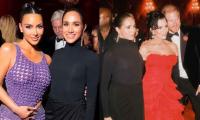Decoding the 2024 election
In Punjab, the PML-N has emerged as the largest party by winning 71 National Assembly seats out of 141
Pakistani voters have given their verdict in the February 8 general elections, which were held in a peaceful and orderly manner. The results have led to a split mandate, and no party has been able to win a simple majority in the National Assembly.
PTI-backed independents have emerged as the largest group with 92 seats. The PML-N and the PPP have come second and third with 77 and 54 seats respectively. The MQM has won 17 seats and independents managed to grab 12 seats; the JUI-F and the PML-Q have won four and three seats respectively, while the remaining ones have gone to smaller parties.
Since the PDM parties and the PPP have more seats than PTI-backed independents, a coalition government led by the PML-N will likely be formed in Islamabad.
PTI-backed independents have had a landslide victory in Khyber Pakhtunkhwa (KP) and are in a comfortable position to form the provincial government with 83 seats. The PTI has also won 39 out of the 45 National Assembly seats from KP and has practically swept away all the other parties in KP.
Voters in KP have given an overwhelming mandate to the PTI, clearly rejecting anti-Imran Khan propaganda and supporting the party-backed candidates overwhelmingly. While the PTI’s victory is not unexpected, the margin of victory is surprising.
As expected, the PPP has swept the elections in rural Sindh and won more seats (84) than a simple majority required in the Sindh Assembly to form a provincial government. Most of the National Assembly seats won by the PPP are from rural Sindh; it managed to win seven seats from Karachi. The anti-PPP political alliance, the GDA, failed to win a single National Assembly seat from Sindh. In Karachi, the MQM made a strong comeback with 15 seats; the PTI failed to win a single seat from Sindh.
In Punjab, the PML-N has emerged as the largest party by winning 71 National Assembly seats out of 141. The PTI has won 55 seats from Punjab. In the Punjab Assembly, the PML-N has bagged 137 seats, and the PTI has won around 111 seats.
The PML-N needs 12 more seats to form the government in Punjab. Nearly 26 independents have also won from Punjab, and most of them are likely to join the PML-N. So the PML-N will be in a position to form the government in Punjab with the help of independents. The PPP has won 10 seats and the PML-Q eight seats.
PTI-backed independents performed better than expected. The PML-N was expecting to win 90 to 94 National Assembly seats from Punjab. My assessment went wrong in this regard. I predicted that the PML-N would be able to win 94 seats. However, the PML-N performed better than expected in northern Punjab and won 11 out of the 13 National Assembly seats. Although it performed well in southern Punjab but lost at least five seats it expected to win. It has won only 17 seats out of the 46 seats from southern Punjab. The PTI has won 15 seats from the region, performing better than analysts’ expectations. The PPP has won seven seats and other independents have managed to win four seats.
The PML-N lost at least 11 more seats to the PTI from central Punjab and suffered shocking defeats in Sargodha, Faisalabad and Gujranwala divisions. In Faisalabad Division, the PTI has won 15 out of the 18 seats, and the PML-N has only managed to win three. In District Faisalabad alone, the PML-N lost nine out of 10 seats against the PTI, including the defeat of former interior minister Rana Sanaullah Khan. In Sargodha division, the PML-N has won only two out of 11 seats. In Gujranwala division, it has won seven out of 13 seats. In 2018, the PML-N had lost only two seats from the region.
The PML-N has won only 37 out of the 82 seats from central Punjab. In 2013 it won all the 88 seats. And in 2018, it won 48 seats despite facing all the odds and problems at that time. The PML-N also lost seats in Sheikhupura, Sahiwal, Pakpattan and other districts where it had a landslide victory in 2018. It is a big political setback for the PML-N in its stronghold. The PTI has made big inroads into central Punjab.
Four factors have largely contributed to the PML-N’s defeat and the PTI’s victory in three divisions of central Punjab. A big factor in this debacle is the abstention of a sizeable section of PML-N voters. The party failed to mobilize its support base to outnumber PTI voters. It also failed to sell its narrative to many of its supporters. The PML-N’s narrative was not convincing for independent voters and its fringe supporters.
The second factor is the overconfidence of the PML-N. The party was so certain it would win that it started its campaign quite late. The PML-N also made many mistakes in its campaign and did not prepare well enough to mobilize their voters on the polling day. It took its voters for granted and paid the ultimate price.
The third factor is independent voters who punished the PML-N for the inflation its policies caused during its 16-month-long coalition government. Many people still blame the PML-N for the economic mess they find themselves in.
The fourth factor is young voters. The PML-N failed to convince young voters aged 18 to 25. While it tried to attract them with slogans of laptops and cheap loans, these slogans were not enough to attract a big section of young voters. Many PML-N voters falling in the age group of 36 to 65 years also preferred to stay at home instead of coming out and supporting PML-N candidates. The party needs to learn hard lessons from this big setback and will have to work hard to recover the lost ground.
The PTI used modern communication tools to reach out to its voters and supporters. After the initial crackdown against the party, the PTI built its structures on digital media. It used social media platforms to convey its message and mobilize its voters. It outmanoeuvred its traditional opponents with non-traditional methods of campaigning. It ran an effective campaign through social media, and the election results show that it was successful in doing so.
The writer is a freelance journalist.
-
 Jason Momoa Cherishes Hosting Ozzy Osbourne's Final Gig Ahead Of His Death
Jason Momoa Cherishes Hosting Ozzy Osbourne's Final Gig Ahead Of His Death -
 Real Reason Timothee Chalamet Thanked Kylie Jenner At Awards Revealed
Real Reason Timothee Chalamet Thanked Kylie Jenner At Awards Revealed -
 Will King Charles Attend Funeral Of Prince Philip's First Cousin, Princess Irene?
Will King Charles Attend Funeral Of Prince Philip's First Cousin, Princess Irene? -
 'Furious' Prince William Wants Andrew As Far Away As Possible
'Furious' Prince William Wants Andrew As Far Away As Possible -
 Blood Moon: When And Where To Watch In 2026
Blood Moon: When And Where To Watch In 2026 -
 Apple Foldable IPhone Tipped For 2026 Launch With A20 Pro Chip And C2 Modem
Apple Foldable IPhone Tipped For 2026 Launch With A20 Pro Chip And C2 Modem -
 Meghan Lends Credence To Reports Of Rift With Kim Kardashian On Chicago's Birthday
Meghan Lends Credence To Reports Of Rift With Kim Kardashian On Chicago's Birthday -
 Florida Woman’s Alleged Bid To Bribe Police Ends In Unexpected Discovery
Florida Woman’s Alleged Bid To Bribe Police Ends In Unexpected Discovery -
 James Van Der Beek Strongly Opposes The Idea Of New Year In Winter
James Van Der Beek Strongly Opposes The Idea Of New Year In Winter -
 Elon Musk’s Starlink Rival Eutelsat Partners With MaiaSpace For Satellite Launches
Elon Musk’s Starlink Rival Eutelsat Partners With MaiaSpace For Satellite Launches -
 Fans Feel For Leonardo DiCaprio As He Gets Awkwardly Snubbed: Watch
Fans Feel For Leonardo DiCaprio As He Gets Awkwardly Snubbed: Watch -
 Japan Launches The World’s First Trial To Extract Rare Earth Elements
Japan Launches The World’s First Trial To Extract Rare Earth Elements -
 Prince Harry Breaks Cover In California Amid Tension At Home With Meghan Markle
Prince Harry Breaks Cover In California Amid Tension At Home With Meghan Markle -
 ASAP Rocky Makes Massive Comeback With New Album
ASAP Rocky Makes Massive Comeback With New Album -
 Amanda Seyfried Unveils How Channing Tatum Teased Her On 'Dear John' Set
Amanda Seyfried Unveils How Channing Tatum Teased Her On 'Dear John' Set -
 Blue Moon 2026: Everything You Need To Know
Blue Moon 2026: Everything You Need To Know




